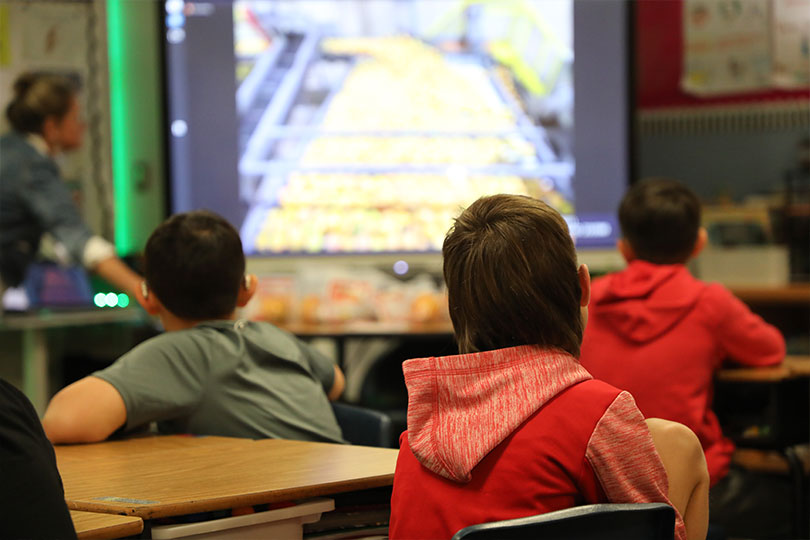By Shelby Shank
Field Editor
Students learned how grapefruit gets from the orchard to their plates through Texas Farm Bureau’s (TFB) Farm From School program.
April Flowers with Lone Star Citrus Growers in Mission showed the students the sorting, grading and packaging process.
“This virtual field trip took students to the Rio Grande Valley to learn all about grapefruit,” said Jordan Bartels, TFB associate director of Organization Division, Education Outreach. “Farm From School helps students in kindergarten through fifth grade see the diversity of Texas agriculture. They virtually visit different regions of the state and learn about the different crops and livestock in Texas.”
During the 30-minute virtual session, Flowers shared how grapefruit are grown and harvested, differences in appearance and how the fruit is packed.
Grapefruit is the state fruit of Texas and is primarily grown in the Rio Grande Valley.
The growing season begins in March when the trees are in bloom. It takes six months for the blossoms to turn into grapefruit. By the end of September, the grapefruit is ready to harvest. Harvest continues through mid-November, and the fruit is hand-picked from the tree.
Once the grapefruit has been harvested and left the orchard, it goes to the warehouse of Lone Star Citrus Growers. The fruit is then cleaned and covered in a food grade wax.
“The wax makes sure that your fruit lasts a little longer because it takes a while for it to get from the warehouse to the grocery store,” Flowers said.
Flowers taught students about different grades of grapefruit: pretty, choice and juice.
Pretty grapefruit have no blemishes and are attractive to the eye, Flowers explained.
Choice grapefruit might have a little scar on the fruit, but it still tastes the same as a pretty grapefruit. Juice-grade grapefruits typically won’t sell because they aren’t attractive to the customer. So, they are sent to the juice plant where a specialized machine will extract the oils from the fruit. These oils are used in cleaning products, make up, scented items and more. Then, the fruit is squeezed to be turned into juice.
“We want to use every piece of the fruit we can and not waste anything. It’s sent to a juice extractor where the fruit gets squeezed, and the juice comes out,” Flowers said.
After the grapefruit has been sorted into groups by grade and size, the fruit is then either packaged in bags or in a box. Once the fruit is in the box, they are loaded on trucks and sent to a distribution center before the grapefruit ends up at the grocery store to be purchased. Flowers noted they send over 20 semi-trailers in a single day full of grapefruit to distribution centers.
Students asked Flowers many questions about technology and how farmers know when the grapefruit is ready to be harvested.
At the end of the session, Flowers encouraged students to eat more grapefruit and reminded them a little scar on the fruit won’t affect the sweet taste.
More information on Farm From School
Kindergarten through fifth-grade students virtually “meet” with a farmer or rancher once a month using a video conferencing app.
This semester, students learned about quail, working farm dogs and sugarcane.
The popular program will be back again next spring, and teachers can register online. Click here to sign up by Jan. 11.
Visit texasfarmbureau.org/aitc for more information and the latest announcements on TFB’s Ag in the Classroom activities.

